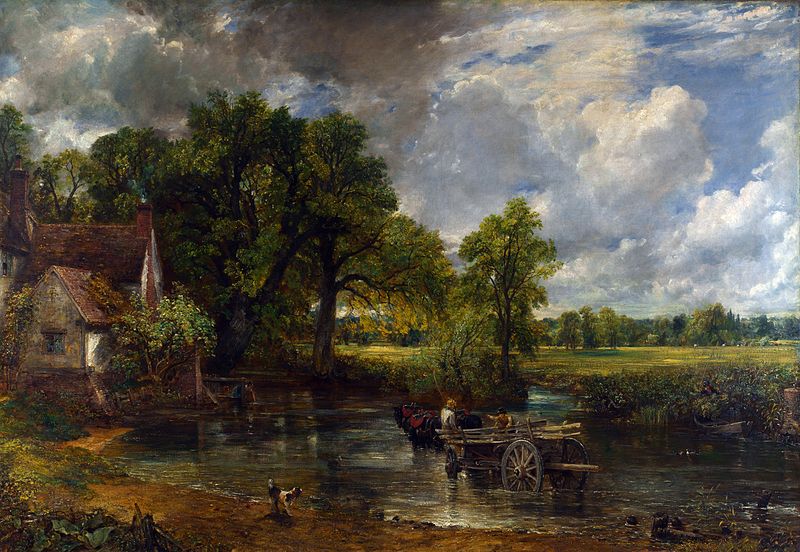Topic: States of Matter

Area: Science
Abstract: To introduce the notion of “States of Matter”, one painting by John Constable will be presented linking with the notion of representation of different matter in daily lives. Then, they will understand the notion of physical properties in these different matters.
Learning objectives:
- Students will be able to understand the three physical states of matter.
- Students will be able to know the physical properties of each state.
Teachers’ profile:(team transversality) Chemistry teacher
Advisable age of students: (Flexible according to the curriculum of specific country) : 12-13 years old
Previous knowledge:
-Water circle
– Physical state of the water
Global development Total duration: 45 minutes
Materials: desks or chairs
Phase 1 Duration: 10 minutes Visualisation
Development :
“The Hay Wain” BY John Constable

Discussion around the artist: Who? What did he do? Lead students to describe the painting presented. Then, link this painting with the notion of ‘matter’. What do you see in this painting ? What do you see in the middle of this painting? What are the elements you see in this painting? What do you think this painting represents ?
Phase 2 Duration: 25 minutes Artistic action and experimentation
Development: Before we start, we need to arrange a circle with some desks or chairs to make it difficult to access certain areas. The space must be considerably bigger than the group can fill when closely spaced. The teacher tells to the student to stand up in the middle of the circle and get as close together as they can
1st step : Liquid State
Tell the students to move around freely amongst one another, but to stay in the middle of the space/room.
2nd step : Solid State
If before they were moving comfortably, the teacher now tells them we are going to take away some energy from the group. They are given less energy to move in the circle. As their energy decreases, they will begin to feel tired, and not move as much or as fast.
As the students continue to slow down, the teacher “removes” even more energy. How can they move without energy?
Tell the students to grab hold one another to help them to move. At the end of this step, the students need to stand together..
3nd step : Gaseous State
After the end of the second step, the teacher tells the student that there is now so much energy that they can’t stay in the center. They are free to move anywhere in the defined space, and that if they “bump into” anything they will bounce off in a new direction. Now the group is moving pretty freely all over the defined space.
After a few minutes, the teacher can change the organization of the circle to change its shape.
Phase 3: Duration: 10 minutes Reflexion and debate
Development:
– Why did we do this activity ?
– For the first step, why did we stay within the shape, but we were moving continuously ?
– How can we move without energy ?
– How can we help us move without energy?
– Did your movement change the shapes of the group ?
– What happened when I changed the shape of the circle?
– In the 3nd step, how did you organise yourself to occupy the space?
Comments, possible derivations, and prolongations of the proposal: We can add some difficulties with the different matters.
References and links:
Vidéos to understand the notion

